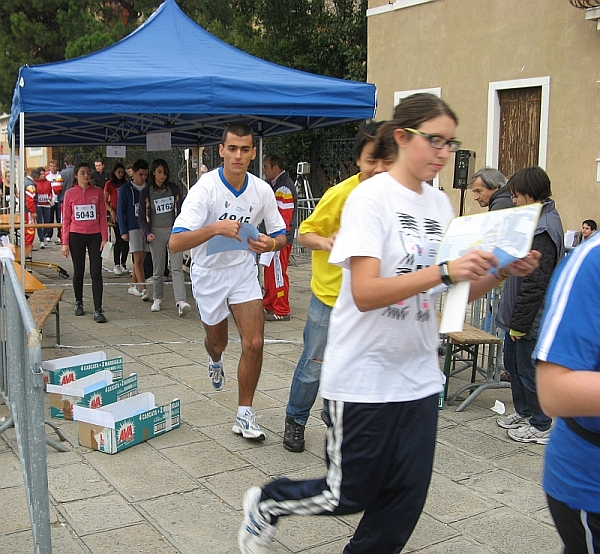
And they're off: another handful of orienteers has just grabbed their maps and the clock is running.
I started scribbling this yesterday to the sound just outside the window of a lot of people going by in a hurry. Sometimes a large hurry. I could hear the thudding of feet, the puffing of lungs, and incoherent voices of various ages and genders that sounded either baffled or urgent, or both.
This went on Saturday and Sunday. “This” was the 31st edition of the Venice Orienteering Meeting. Each year, on the second Sunday of November, our neighborhood is besieged by people who’ve come from all over Europe (though I’m sure you’d be welcome no matter where you live. Pitcairn Island? Cool!). They are competing in a timed race armed only with a map and a compass, and a list of checkpoints to cover in the correct order in the shortest time possible. That’s my homespun definition of orienteering, an undertaking which has now reached the level of a sport. It even has a federation.
When an activity passes from being a game to a sport, things get serious. (A shout-out to Ernest Hemingway, who said “There are only three sports, bullfighting, motor racing and mountaineering; all the rest are merely games.”) Frankly, some of the orientators didn’t look so serious to me.
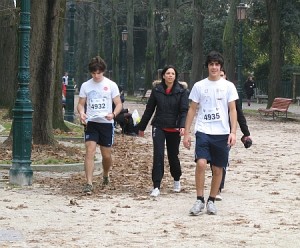
In a way, much more than boating or swimming, orienteering is the city’s natural sport. In fact, I’d say it was Venice’s destiny to present itself, not merely as the repository of historical and artistic magnificence, but as a serious challenge to the brains and legs of people who are looking at it as terrain.
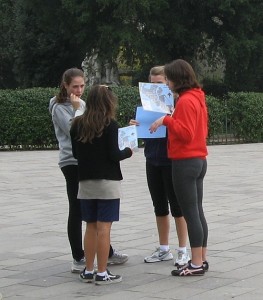
What, after all, are mere forests and torrents and ravines compared to the seductive complexity of dark, narrow streets, canals, dead ends, and bridges to everywhere? Any newbie who has ever set out for a specific destination armed only with the primitive map the hotel gave out can tell you that there may be moments here when negotiating forests and ravines would be simpler.
Two things about the course: First, it was designed by a German man. I don’t comment, I merely note it. Make of it what you will.

Second, there were many different courses, divided according to the gender and skill of the orientizers. These courses varied in length and in “dislivello,” a complicated topographic term which I can only manage to remember as being the distance in the difference of the heights of any two points. (Perhaps a humorous idea in Venice, but deeply meaningful in the mountains. If you’re running in the mountains, it probably interests you much more to know how far up and down you’re going to have to go than the kilometers to cover. If you live in the Lincolnshire fens or downtown Houston, it is a totally foreign concept.)
The longest course was, logically, for the serious athletes in the Elite Category. For the men, it covered 10,500 meters and 80 meters of dislivello (six and a half miles and 262 feet). Winner: Alessio Tenani of Italy, who finished in 1 hour 9 minutes and 51 seconds. The last in this category came in at twice the time: 2:20:23.
For the women, the Elite course covered 8,700 meters and 73 meters of dislivello (five and a half miles and 239 feet). Winner: Sarka Svobodna of the Czech Republic, who made it in 1:08:27. Last to come in here clocked 2:00:41.
Behind all these paladins were large squadrons of students of assorted ages, and a richly variegated quantity of people — couples with small children, some of whom could race like the wind, or quartets of young adults, or pairs of roundish older people taking the whole thing at a pace that could have been calculated in phases of the moon.
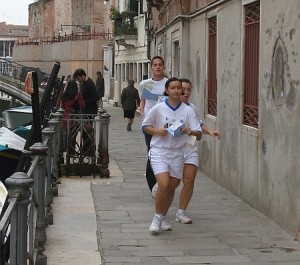
But while we’re talking about walking, you should know that there is another annual event that might be more appealing, or at least less competitive. It’s called “Su e Zo per i Ponti“ (Up and Down the Bridges), and groups turn out in hordes. Here too there is a laid-out course to follow, but no need at all to use your brain. I’ve seen pods of people as they go by and most of them seem more interested in laughing and talking than in getting home before dark.
Next year’s “Su e Zo” will be on April 10 (2011) and if you’re going to be here it could be a very diverting and different thing to do. After all, if you’re going to be tramping around from hither to yon anyway, why not join the masses of people who are so cheerfully blocking the streets? You’re going to have to mingle with a lot of them anyway, and if you register you get refreshments and a medal, which you can’t say every day in Venice.
If there are tickets left you can register the morning of the event, at the departure point in the Piazza San Marco. It costs six euros, less than a vaporetto ticket. I think you should do it.

I myself have never thought of participating, mainly because walking around Venice takes up so much of my daily existence that it would seem bizarre to do what I do every day with a batch of people who regard it as entertainment. I’m not saying I don’t love walking around Venice, it’s just that I usually do it in second or third gear. I need to get places.
If I had any free time on a Sunday, I’d be taking a nap.
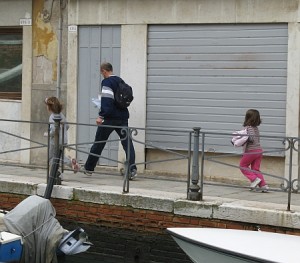
-
A checkpoint symbol that missed the pickup at the end. I wonder how long it will stay here before somebody does something.
-
These are two people to whom earning the maximum points hasn't even occurred.

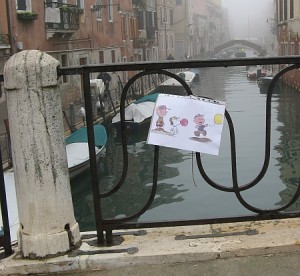
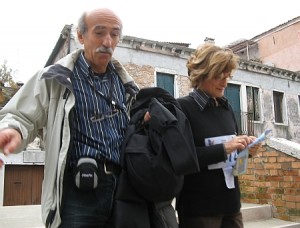
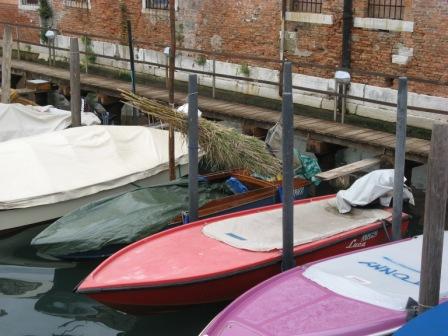
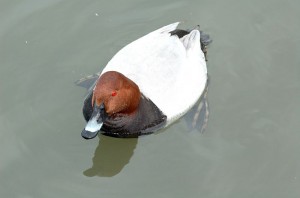


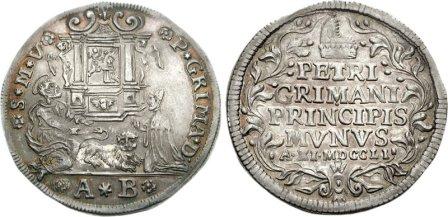

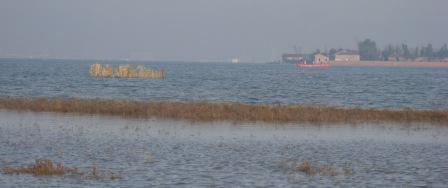

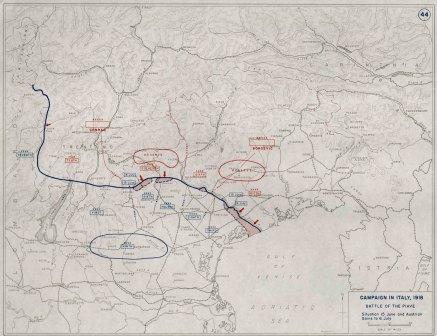 It is a pleasant little stream which starts in the Alps and empties into the sea not far from Venice, but more importantly, it formed the front which finally stopped the enemy advance and led to its ultimate defeat. The Piave is therefore also known as “The river sacred to the motherland.”
It is a pleasant little stream which starts in the Alps and empties into the sea not far from Venice, but more importantly, it formed the front which finally stopped the enemy advance and led to its ultimate defeat. The Piave is therefore also known as “The river sacred to the motherland.” 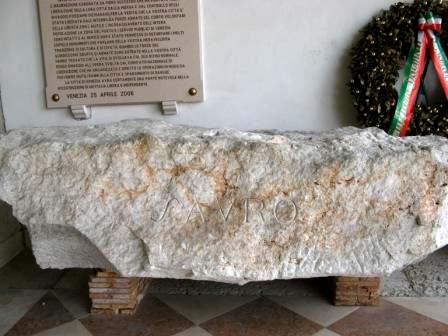 These are famous martyrs of the Italian resistance. Despite living in Austrian territory they considered themselves Italians were fighting for Italy, while according to the Austrian viewpoint they were supposed to be fighting against it. These men were epic heroes. I can’t understand why their life stories haven’t been turned into tragic operas. Where is Verdi when you need him?
These are famous martyrs of the Italian resistance. Despite living in Austrian territory they considered themselves Italians were fighting for Italy, while according to the Austrian viewpoint they were supposed to be fighting against it. These men were epic heroes. I can’t understand why their life stories haven’t been turned into tragic operas. Where is Verdi when you need him? 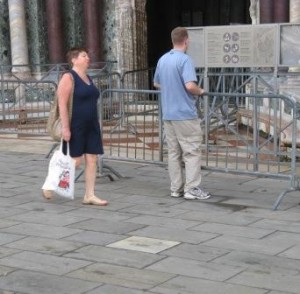
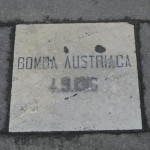
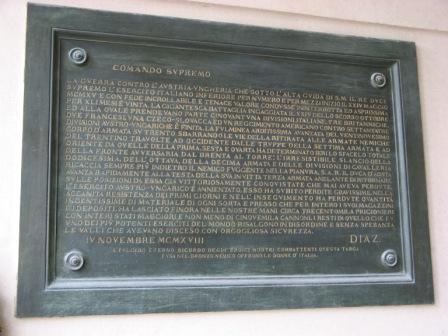 It gives the full text of the address given by General, later Marshal, Armando Diaz, chief of general staff, announcing the Italian victory of the Battle of Vittorio Veneto and the end of the war. It manages in very few lines not only to report the precise details of the enemy’s undoing but to convey every emotion conceivable in the victors of a struggle beyond human comprehension.
It gives the full text of the address given by General, later Marshal, Armando Diaz, chief of general staff, announcing the Italian victory of the Battle of Vittorio Veneto and the end of the war. It manages in very few lines not only to report the precise details of the enemy’s undoing but to convey every emotion conceivable in the victors of a struggle beyond human comprehension.